Substance Misuse & Suicide Prevention

Read
Glenn Close

The acclaimed actress talks about empowering better youth mental health



Read

The acclaimed actress talks about empowering better youth mental health

Each September, we observe National Recovery Month to engage in conversations about overdose prevention, highlighting the possibilities available to “Every Person. Every Family. Every Community.”
About 1 in 7 Americans reports having a substance use disorder. There may not be a family in this country that hasn’t been touched by the realities of addiction.
Addiction (or substance use disorder) is a treatable medical condition, but treatment can only start when someone recognizes their addiction and knows help is available. Recognizing one’s addiction and asking for help isn’t easy, and we all have a responsibility to help eliminate the stigma around it.
Despite addiction impacting so many people, stigma still remains a problem. Stigma, whether caused by bias, purposeful exclusion, or a lack of understanding, is harmful. Stigma can be the barrier between people and the help they need. Everyone deserves to get the support they need to recover from addiction free of stigma and judgment.
Meaningful recovery can start with safe spaces created by an open and loving community. When you understand the realities of addiction and the various treatments available, you can save a life.
Medication, inpatient rehabilitation, outpatient counseling, and long-term support group participation are all treatments for substance use disorders. Importantly, FDA-approved medications for opioid use disorder (MOUD) including methadone, buprenorphine, and naltrexone. MOUD have been found effective in helping people overcome addiction, stay in recovery longer, and prevent reoccurrence of use.
Recovery Month brings together people from all over to better understand and reduce the harms caused by substance use disorders (SUD) in the United States. If you’re interested in learning more about SUDs, how they function as a medical disease, and treatment and recovery options, visit CDC’s Stop Overdose website.
Written by Brittany Curtis, M.B.A., Division of Overdose Prevention, Centers for Disease Control and PreventionAmerican Psychiatric Association president Dr. Petros Levounis, M.D., M.A., offers his insights on the state of the opioid epidemic, and what can be done to curb rates of addiction and overdose.
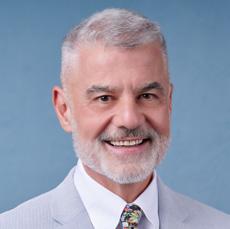
How urgent is the need to develop a response to the opioid use crisis in America?
The opioid epidemic is very much with us, alive and terrible as it is, devastating communities throughout the country. What’s particularly concerning is that there are some populations that are disproportionately affected. The death rates for Black men have tripled over the past few years and over the past decade. Altogether, men are more vulnerable than women when it comes to opioid overdose. Although the country as a whole may be seeing somewhat of a plateauing of the deaths from opioid overdose over the past 12 months, there are regions of the country that are still being hit very hard.
Is there a reason men are more vulnerable than women?
Men are more vulnerable to addiction in general, so it goes hand in hand that opioid overdose will also affect men preferentially. It’s the way we’re socialized, the way we’re brought up. Men have more opportunities and expectations to take more risks. So, there are many ways and many reasons why we see addiction as being skewed somewhat on the male side.
Are there any other underserved populations that are particularly affected by the opioid crisis?
Incarcerated people make up one of the most discriminated against populations. Quite often, incarcerated people do not have access to buprenorphine, a lifesaving medication for the treatment of opioid use disorder.
Addiction is a chronic relapsing illness, very similar to diabetes, hypertension, and depression. While incarcerated people get medical treatment for their diabetes, it’s outrageous that they don’t get the treatment they need for their opioid use disorder. The fact that you’re incarcerated
and may not have access to opioids does not make you immune to the incredible cravings that you may have for opioids, and there’s a tremendous risk of relapse right away when you get released from a prison.
What can we do to address these disparities? One good thing that has already happened was the removal of the X-waiver. Before, you needed a special license to prescribe buprenorphine, a life-saving medicine for the treatment of opioid use disorder. As of December 2022, you no longer need the X-waiver, and we applaud that development.
The second thing is telehealth, which has helped vulnerable populations that may not be able to come to a clinic. The relaxation of rules during the COVID-19 pandemic very much helped these vulnerable populations. We hope, strive, and fight for the extension of these emergency allowances to help these vulnerable populations.
What is the biggest misconception people have about opioid use disorder?
Quite a few people feel that addiction is a matter of willpower, that if you are strong enough and really work on it, then you can beat the disorder and you don’t need professional help. Not true. The best analogy I can think of is diabetes. If you have insulin-dependent diabetes, no matter how much you are whiteknuckling it, you cannot will your way through it without insulin. You need to have a doctor help you with your illness. Opioid use disorder works the same way.
We’re incredibly fortunate to have a powerful, safe, and effective medication that can address opioid use disorder: buprenorphine. We also have alternatives to buprenorphine if that doesn’t work. But just trying to do it yourself is not an effective strategy.
Sponsored
The best way to avoid becoming addicted to opioids is to skip taking them altogether. Many pain management guidelines, including those created by the Centers for Disease Control and Prevention, recommend nonsteroidal anti-inflammatory drugs (NSAIDs) instead of opioids as first-line treatments for minor dental pain.⁵
“Consumers should speak to their doctor about trying an NSAID first for minor pain relief rather than filling a prescription opioid right away,” Ng advised.
In a study, Aleve® was proven to be as effective* and longer lasting than a common prescription pain reliver for minor pain management.¹

America doesn’t do anything halfway — including opioid addiction. The United States uses 80% of the opioids in the world, and this has led to a full-scale epidemic of overdose deaths in this country.² The numbers are grim: 130 Americans die every day from opioid overdoses.³
Even more alarming than the statistics is how avoidable the crisis should be, because opioids are often unnecessary — and there are effective over-the-counter alternatives to relieve minor pain.
“Many consumers think prescription opioids are the only option for reliable and effective pain relief,” said Charlene Ng, vice president and head of U.S. Medical Affairs at Bayer Consumer Health. “They don’t realize that for some of them, it may just take a short course to produce physiological effects that can make them vulnerable to opioid use disorder.”

One reason people fall into addiction involves persistent
myths surrounding it, like the belief that addiction is a failure of mental discipline or self-control, or that it affects only certain socioeconomic groups. The fact is that anyone can become addicted to opioids. Addiction has a well-described physiological and biochemical dependence that leads to uncomfortable withdrawal symptoms and tolerance.
Perhaps the most persistent and damaging myth about opioid addiction is that it requires purposeful abuse of the drug. In reality, even a short course of prescribed opioids can lead to dependency. The typical addict looks like your neighbors, coworkers, or relatives, and their addiction may well have started in a doctor’s office.

A study in the Journal of the American Medical Association found that 80% of patients who had their wisdom teeth extracted were prescribed opioids, and the people who received those prescriptions were much more likely to still be using opioids a year later.⁴
Contrary to popular misconception, NSAIDs can be as effective as opioids in managing minor pain, and are known to be non-addictive. A recent study, for example, showed that naproxen sodium, the active ingredient in Aleve®, provided pain relief that was equal* to a commonly prescribed opioid (hydrocodone + acetaminophen), was better tolerated, and lasted longer.¹ In fact, Aleve® is the longestlasting branded pain reliever you can buy over the counter in the United States.
“In a head-to-head dental pain study comparing Aleve® to a commonly prescribed opioid,” Ng noted, “adverse event reporting showed Aleve® with only one event (somnolence) compared to 18 events for the opioid (mainly nausea, vomiting, and dizziness).”
Considering the dangers inherent in using opioids, anyone needing to manage minor pain after a procedure should be wary of them — and be aware of their other options.
“There are many effective non-opioid minor pain relief options available,” Ng advised. “Patients should talk to their doctor about these options before using an opioid.”
Written by Jeff Somers1. Stephen A. Cooper, Paul J Desjardins, Todd Bertoch, Alberto Paredes-Diaz, Emanuel Troullos, Azita Tajaddini, Robert Centofanti, Robert An & Donna Morella (2022) Analgesic efficacy of naproxen sodium versus hydrocodone/ acetaminophen in acute postsurgical dental pain. Postgraduate Medicine. 134:5, 463-470, DOI: 10.1080/00325481 .2021.2008180
2. Manchikanti L, Singh A. Therapeutic opioids: a ten-year perspective on the complexities and complications of the escalating use, abuse, and nonmedical use of opioids. Pain Physician. 2008 Mar;11(2 Suppl):S63-88. PMID: 18443641.
3. Scholl L, Seth P, Kariisa M, Wilson N, Baldwin G. Drug and Opioid-Involved Overdose Deaths - United States, 2013-2017. MMWR Morb Mortal Wkly Rep. 2018 Jan 4;67(5152):1419-1427. doi: 10.15585/mmwr. mm675152e1. PMID: 30605448; PMCID: PMC6334822.
4. Harbaugh CM, Nalliah RP, Hu HM, Englesbe MJ, Waljee JF, Brummett CM. Persistent Opioid Use After Wisdom Tooth Extraction. JAMA. 2018;320(5):504–506. doi:10.1001/ jama.2018.9023
5. Centers for Disease Control and Prevention. Guideline Recommendations and Guiding Principles. www. cdc.gov/opioids/ healthcareprofessionals/ prescribing/guideline/ recommendationsprinciples.html
To learn more, visit aleve.com
Sponsored
Vinomis Labs has a range of nutraceuticals that offer myriad health benefits, including its pain-relieving Vinoprin and Vindure 900. Here, CEO Maria Donohue talks about how Vinomis Laboratories’ science-backed products can be used as alternatives to more habit-forming and side effectproducing options.
How can Vinomis Labs help people avoid using opioids?
Vinomis Labs has experience helping people wean off opioids by using one or both of our natural products.

Vinoprin is our most popular product for pain control. Likely, the weaning process may require the help of a professional. Vinoprin is certainly a good alternative for anyone in pain, especially opioid-dependent users.
What ingredients are in Vinoprin and how does it work?
Vinoprin is made from a proprietary beer hops cone extract blend, Humulus lupulus L, which is a natural anti-inflammatory agent. It is also encapsulated with ginger and peppermint oils. It works similarly to Motrin but without the same side effects. In addition to relieving pain, it can reduce anxiety and be used as a sleep aid.
Are there any other Vinomis products you recommend for people experiencing chronic pain?
Vinomis Labs has a proprietary blend of resveratrol, Powergrape, and quercetin called Vindure 900. This also has an antiinflammatory effect. This nutraceutical is a combination that has been shown to be a powerful antioxidant, anti-aging blend and neurocognitive-enhancing formula. In addition, our company has found that our proprietary blend, when used regularly, can decrease the incidence and severity of COVID-19, among our Vindure 900 customer group.
The combination of Vinoprin and Vindure 900 is a great alternative to other treatments for pain management, increased energy, and overall better health.
Learn more at vinomis.com
Email: cs@vinomis.com
Call: (412) 721-0484
When mental illness hit close to home for actress Glenn Close, she was compelled to do something to help others struggling get the care and support they need. Now, Bring Change to Mind is breaking down the mental health stigma among our nation’s youth.

Nearly 15 years ago, Glenn Close’s sister, Jessie, told Glenn she was having regular suicidal thoughts. “I had absolutely no clue she was struggling,” Close said.
Jessie was diagnosed with bipolar disorder and her son, Calen, with schizophrenia. They both received the treatment and support they needed to address their conditions, but reaching out to receive that care — even from a supportive loved one — was extremely difficult.
“They said the stigma they were experiencing could be worse than the chronic diseases they were struggling to manage,” Close said.
Further conversations with her family made Close feel compelled to use her platform to help end the stigma surrounding mental health and illness.
“I told my family that I would do something as long as they would do it with me,” she said. From those conversations, Bring Change to Mind (BC2M) was born.
Erasing the stigma
BC2M is an organization aimed at ending the stigma and discrimination surrounding mental illness, and bringing important conversations about the topic to the forefront. The non-profit accomplishes this by creating multimedia campaigns, storytelling movements, and youth programs centered around mental health.
“We saw that in working with youth, we could really change the trajectory of a young person’s life,” said Pamela Harrington, BC2M’s executive director.
More than 100,000 kids have gone through BC2M’s high school program, which is active in 42 states. According to Harrington, the program usually comes to schools after students raise concerns about their own or their peers’ mental health, which creates an effective environment for open and honest conversation.
“The kids get it,” Close said. “They are not afraid to talk to each other, peer-topeer, about the challenges they face. They
find out very quickly that they are not alone.”
BC2M’s research-backed program centers around peer-to-peer games, presentations, and conversations. This approach fosters more honest dialogue while the program is ongoing, and makes it easier for kids to ask for — or offer to — help when needed in the future.
The future
BC2M is looking to expand its youth offerings even further. It recently launched a Middle School Pilot Program designed specifically for 7th and 8th Grade students.
“Coming out of the pandemic, we saw the need for this type of programming is becoming so much more widespread,” Harrington said, “and the groups we need to reach are even younger.”
Harrington sees BC2M’s youth programs reaching far beyond the kids physically involved in them. She says that in polls they’ve run with program attendees, more than 70% say they’re now interested in working in behavioral health.
“I have the most incredible amount of hope, seeing how these students have gravitated toward courageous and vulnerable conversations,” Harrington said. “They’re demanding that we have better systems, better policies, and better leaders. And, eventually, they’re going to become those leaders.”
For Close, BC2M is growing into the force for good she and her sister had envisioned it to be, and is accomplishing its mission of opening the door for important conversations around mental health.
“What we’re seeing is that if you think you’re alone, millions of others are going through the same thing,” Close said. “What you thought of as a weakness will become your strength. But along the way, you will need a vigilant support system.”
To learn more, register your school for the program, or donate to the cause, visit bringchange2mind.org
Written by Dustin Brennan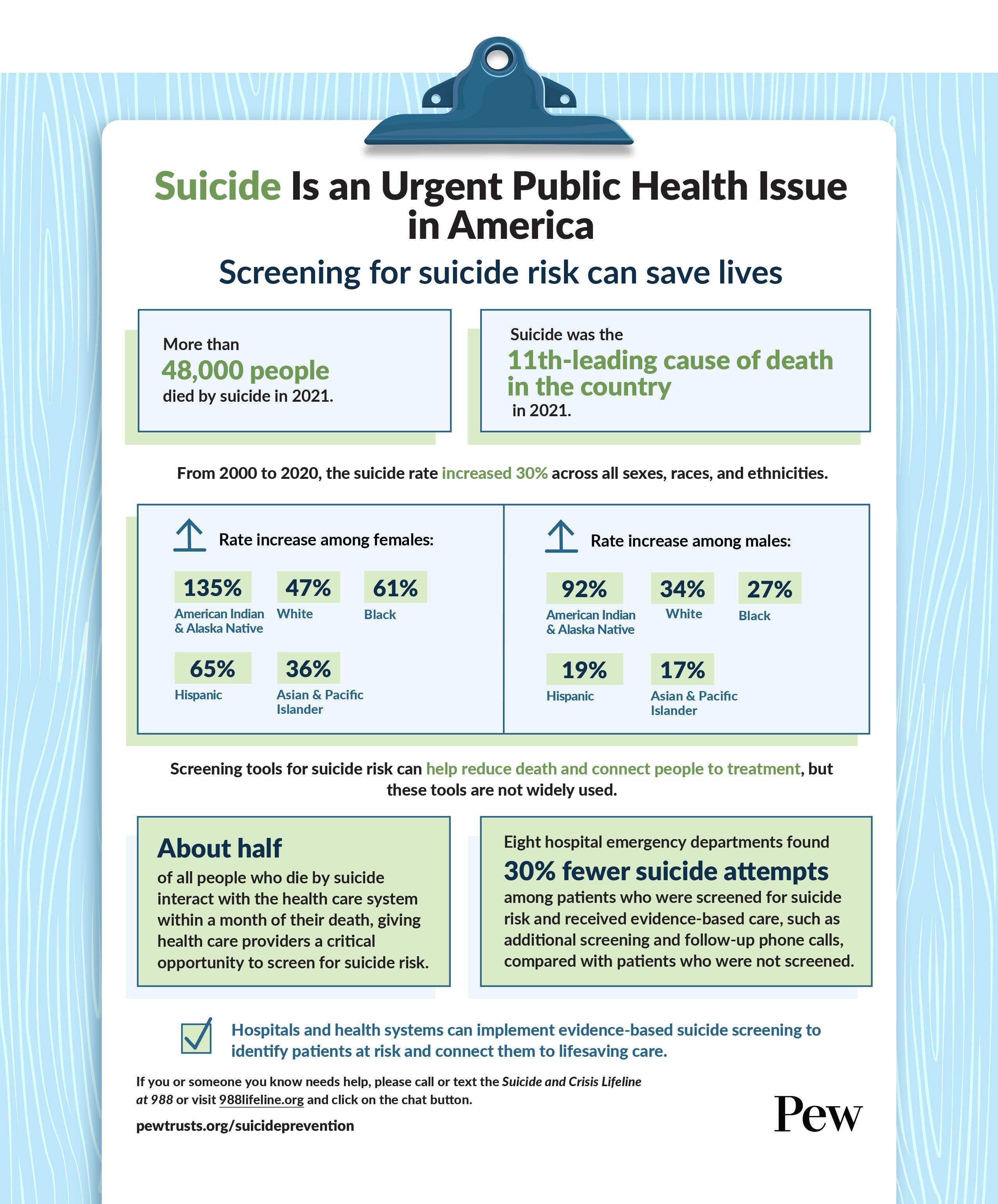
Sponsored
There is a mental health and addiction crisis in this country. No longer can we sweep it under the rug or speak in hushed tones because of the stigma. The time for answers is now, so we spoke with Dr. Rachel Docekal, CEO of Hanley Foundation, whose mission is to eliminate addiction through prevention, advocacy, treatment, and recovery support.
How is the Hanley Foundation making a difference? We are saving lives and changing outcomes. It starts with education. We empower youth to live with the courage to make healthy choices. Our prevention team provides evidence-based programming across Florida, teaching kids the importance of delaying their first use of alcohol to reduce their risk of future problems.
Addiction affects the brain, which develops until the age of 25. By raising awareness, we are positively influencing attitudes and creating better outcomes.
It seems there’s a cookie cutter approach to recovery, how is Hanley Foundation doing things differently? The one-size-fits-all approach to treatment has been proven to be ineffective. Successful treatment must be highly individualized to meet the unique needs of each person. We offer a holistic approach to each individual’s recovery journey focusing on the wellbeing of mind, body, and spirit. We also provide career development tools, housing resources and other wraparound services to ensure people who complete treatment can lead productive and fulfilling lives.
Sponsored
How is Hanley Foundation changing the conversation around mental health? It is a serious problem. No matter your background or profession, anyone can struggle with mental health issues. When it escalates, they often find comfort in alcohol and drugs. And when that doesn’t help, they may contemplate or take their life by suicide.

Suicide is preventable, and through the Question, Persuade, and Refer (QPR) program, we provide training to help companies and individuals understand the warning signs, address the challenges, and find help.
To learn more, visit HanleyFoundation. org
Construction is a major contributor to the U.S. economy. The national industry boasts more than 753,000 employers with more than 7.8 million employees and creates nearly $1.8 trillion worth of structures each year.
However, beneath the scaffolding and behind the temporary fencing is an evolving mental crisis that demands attention. The construction industry holds the unfortunate distinction of the second highest rate of suicide among workers in the United States, at 45.3 per 100,000 workers, according to the Center for Disease Control (CDC).
Nearly three decades ago when I started my career in the construction industry, discussions surrounding mental health were virtually nonexistent. Despite long
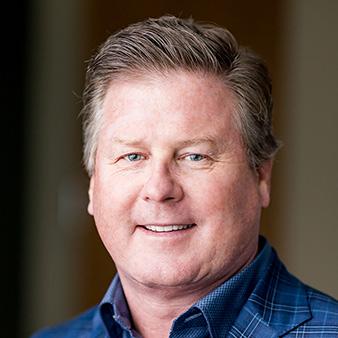
hours, high-pressure environments, and physically strenuous tasks, the “tough guy” culture to just “deal with it” has been pervasive in the industry.
This September, Denverbased PCL Construction joins forces across all U.S. offices with industry organizations to raise awareness about suicide prevention and mental wellbeing. For so long, mental health discussions were considered taboo and frowned upon on the job.
Since the pandemic, 81% of workplaces have increased their focus on mental health, and PCL Construction is one of them. We are empowering our leaders to engage in more candid conversations about mental health, starting day
one of employment during the onboarding process.
We have also implemented mental health conversations into “toolbox talks” where construction field personnel discuss certain topics like mental health prior to beginning their workday. This practice establishes a pivotal norm — these open conversations are not only acceptable but essential.
Suicide prevention in the construction industry requires a collective effort, from breaking the silence to providing education, support, and fostering a caring community. Through open conversations, training and resources, wellness programs, and regular check-ins, companies can ensure their unwavering commitment to navigating the complexities of mental health.
WRITTEN BY Deron Brown President and Chief Operating Officer, U.S. Operations, PCL ConstructionAs the daughter of a Navy veteran and the wife of a Coast Guard veteran, I urge you: save a veteran’s life. It doesn’t take much – we all can do it.
WRITTEN BY Kendra E. Davenport President and CEO, Easterseals
Suicide rates among veterans continue to increase and have been historically high among veterans of all ages. Our veterans are twice as likely to commit suicide, with loneliness and isolation cited as the biggest factors impacting veteran suicide.
Mental health among veterans is an alarming crisis, but often hard to spot. Many times, veterans might not even be able to explain that they need help. And that’s where you come in. Call or text, meet for coffee, do anything that shows you care if you suspect a veteran may be in need, or even if you don’t. Connect them with help directly if they need it. Human connection helps prevent suicides and helps put veterans on the path to healing.
Warrior Call
That’s why earlier this month, Easterseals joined Warrior Call’s efforts to establish a “National Warrior Call Day” on Nov. 12, and added our support to other organizations and leaders asking members of Congress to pass a resolution designating the day. National Warrior Call Day asks Americans to contact a veteran or service member and help them get the mental health support they need.
Easterseals has been serving veterans and military families since World War II. Every day, Easterseals engages local organizations and communities to connect veterans and military families with what they need for meaningful employment,

education, and overall wellness. Services like employment training, job services, and caregiver services.
A great example of these transformational partnerships is our collaboration with the Cohen Veterans Network, an organization that works to improve the quality of life for veterans, active-duty service members, and their families. Through this partnership, we will be able to provide high-quality, on-theground mental health care to veterans and military families in Maryland, Virginia, and the District of Columbia. This will enable more of our warriors and their families to lead fulfilling and productive lives. We hope this effort serves as a model that can be replicated across the country to maximize impact.
We also strive to maximize impact by being a voice for veterans and military families. Easterseals advocates to make sure that the needs of veterans and military families are priorities in communities, in state capitols, and on Capitol Hill.
Add your voice to ours to make a difference for our warriors and their families.
To learn more and get involved, follow Easterseals on social media, or visit us at easterseals.com/ militaryresources
Add your voice to ours to make a difference for our warriors and their families.
You can help a loved one recover from addiction, but you must protect your own physical and emotional well-being.
No matter your faith, race, or income level, you may have a family member or friend who is grappling with alcohol abuse or drug addiction.
those working on the front lines of addiction, social workers, on how people who have a family member or friend with a substance use issue can stay safe physically and emotionally:
WRITTEN BY Anthony Estreet, Ph.D., M.B.A., LCSW-C CEO, National Association of Social Workers
More than 46 million Americans aged 12 and over — or almost 17% of our population — live with an alcohol use or substance use disorder, according to the Substance Abuse and Mental Health Services Administration.
Having a loved one dealing with a substance use disorder can be challenging. As the founder of Next Step Treatment Center in Baltimore, I have seen this issue firsthand. Baltimore, like many other cities, has seen the harmful cultural and economic impact of addiction and drug trafficking.
Advice from the frontlines Instinctually, you will want to help your loved one. Here are tips from
• Don’t walk away from your loved one and try not to personalize the behavior of the person who is using drugs or misusing alcohol.
• Set boundaries when you can and stick to them. This lessens the chance you will engage in enabling behaviors that may hinder recovery. It also helps the person living with a substance use disorder develop accountability.

• Stay engaged in your spiritual life (if that is your choice), eat healthily, and get plenty of exercise and rest. Don’t hesitate to take breaks from the situation as needed.
• Support your loved one’s sobriety by telling them about support
groups, such as Alcoholics Anonymous and Narcotics Anonymous. Drive them to meetings and support groups. Keep in mind people living with substance use disorders may become sober and relapse, so be patient.
• Use support groups for families, such as Alateen or the Children of Alcoholics Foundation.
• Call 988 if you or someone you know maybe experiencing a mental health- or substance userelated emergency.
Social workers want you to know if you are present in the lives of a person who has an alcohol or substance use disorder, there is hope. So, don’t give up. Maintaining your emotional and physical health and safety will require intention and practice.
for treating substance use disorders exist, but these treatments are often restricted, difficult to access, or under-prescribed. This sidelines powerful tools for addressing substance use disorders and contributes to low treatment numbers.
Stigma makes it harder to address addiction
Just as stigma creates barriers for individuals seeking care, it is a roadblock to enacting policies and practices that can help address addiction and urgent issues, such as the current overdose crisis. Negative perceptions and attitudes toward people with substance use disorders can erode support for public policies that help address addiction and emerging crises.
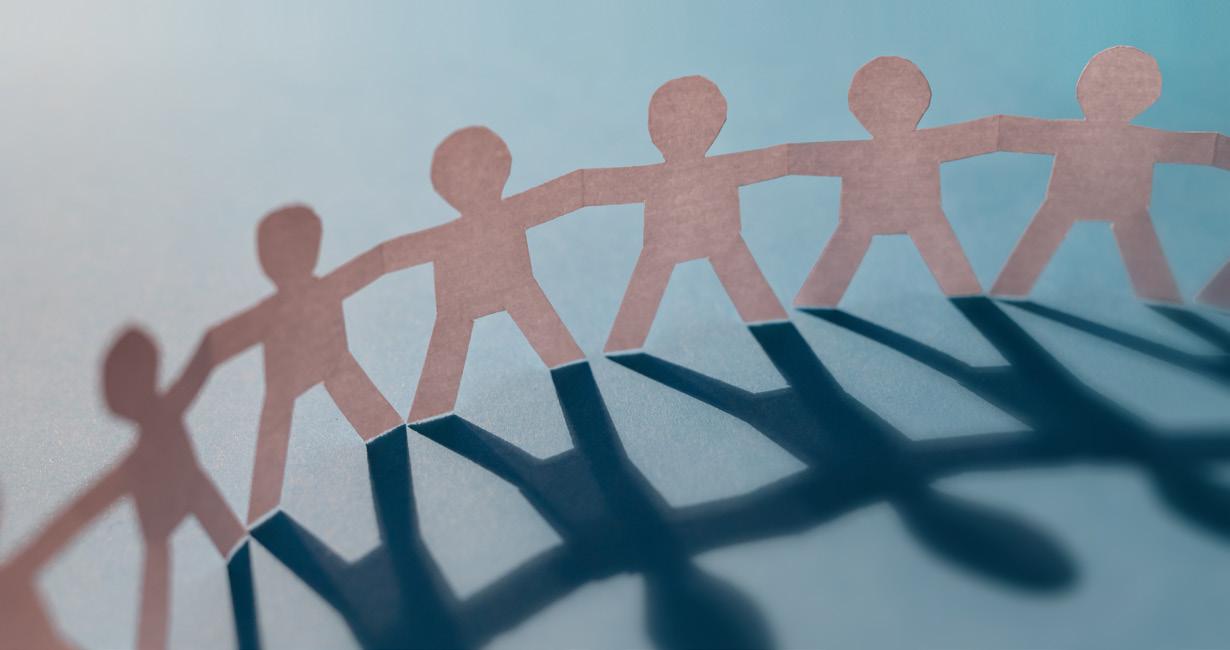 WRITTEN BY The National Academy of Medicine Action Collaborative
WRITTEN BY The National Academy of Medicine Action Collaborative
Substance use issues can affect anyone. A 2021 national survey found that nearly 1 in 3 adults has a substance use or mental health disorder. Last year, there were more than 100,000 overdose deaths in the United States and three-quarters of those were opioid-related.
Hidden in those numbers is the story of the ways stigma isolates individuals with addiction, and limits their access to care and services that could improve their health and quality of life. Reducing stigma can improve access to and quality of evidence-based treatment, and the first step to reducing stigma is understanding it.
Substance use disorders are among the most stigmatized health conditions. Stigma shows up in many ways and harms people with addiction.
For example, in our society, addiction is often viewed as a moral failing rather than a health concern, reflecting
deep-rooted stereotypes and negative attitudes. Faced with this stigma, people with addiction are less likely to seek care, and those who do approach the health system often experience discrimination. Even clinicians prescribing medication for substance use disorders may be seen as “enabling” addiction. Stigma is also embedded in policies and practices, creating barriers that disproportionately affect people who are at higher risk for developing addiction and exacerbating health inequities.
Stigma isolates people Just 13% of people with substance use disorders receive treatment and only 1 in 5 people with opioid use disorder receive treatment medication. Stigma is one of the most common reasons that someone with substance use disorder may not seek treatment at all. Effective medications approved by the Food and Drug Administration
Addiction is often approached punitively instead of as a health condition with treatment options available. People with substance use disorders can also face issues like discriminatory housing and employment policies, further isolating them from opportunities and care.
Putting an end to stigma
Reducing stigma against substance use disorders begins with individual action. By educating oneself about addiction, meaningfully engaging with and learning from those with lived experience, and using person-first language, we can foster a more compassionate perspective. Sharing this knowledge with others and encouraging action amplifies the impact, helping create a ripple effect across society. Together, our individual efforts can significantly reduce stigma, paving the way to better care and support for people with substance use disorders, and ultimately aiding in the battle against this devastating public health crisis plaguing our nation.
severe physical, psychological, and social consequences that can escalate rapidly without proper care. Quality care offers personalized treatment plans tailored to individuals’ unique needs, addressing underlying causes of substance use, offering effective therapies, and equipping individuals with coping strategies to navigate triggers and cravings. Without quality care, individuals may lack the necessary tools to manage the challenges of recovery, increasing the risk of relapse, overdose, and associated health complications. By contrast, quality care offers the expertise, resources, and compassionate guidance that can mean the difference between succumbing to addiction’s devastating effects, and forging a path toward lasting recovery and a renewed lease on life.
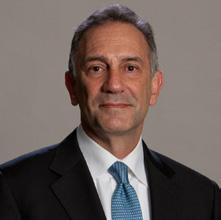
The goal of National Recovery Month is to eliminate the stigma and shame that surrounds substance use disorders (SUDs) by increasing public awareness about addiction and recovery. Quality care is crucial for people with addiction because it is a complex disease that requires comprehensive and tailored treatment methods.

As of 2021, more than 46 million people aged 12 and older met the criteria for a substance use disorder
(SUD) diagnosis. The rise in SUDs, encompassing a range of substance misuse — from alcohol to opioids and beyond — is becoming the nation’s most urgent public health issue. Contributing factors to this crisis include increased availability of potent substances, insufficient access to quality addiction treatment, and
the complex intersection of genetic, environmental, and social influences. This crisis transcends socioeconomic boundaries, affecting individuals from all walks of life.
The growing health concern continues to take more lives every year. In 2022, overdose deaths reached a record high. Fueled by the increase of synthetic opioids, an estimated 109,680 people died from overdose last year alone. The increase of synthetic opioids poses a significant threat due to their potency and unpredictability. Synthetic opioids, such as fentanyl and its analogs, are designed to mimic the effects of natural opioids like heroin and morphine, but they are often much stronger and more lethal.
Quality care can be the difference between life and death for an individual with a SUD. Addiction can lead to
Shatterproof, a national nonprofit organization dedicated to reversing the U.S. addiction crisis, has an established National Principles of Care that assist people in finding quality care. By working with the nation’s leading experts in addiction treatment, the eight National Principles of Care offer science-based practices that improve outcomes for individuals with SUDs.
Ongoing care is crucial for quality treatment because recovery is a journey that requires sustained support, guidance, and reinforcement, all of which help individuals navigate the complexities of post-treatment life.
Ongoing care recognizes that recovery is a long-term commitment and provides the resources and community necessary to foster resilience, prevent relapse, and ultimately achieve enduring recovery and well-being.

